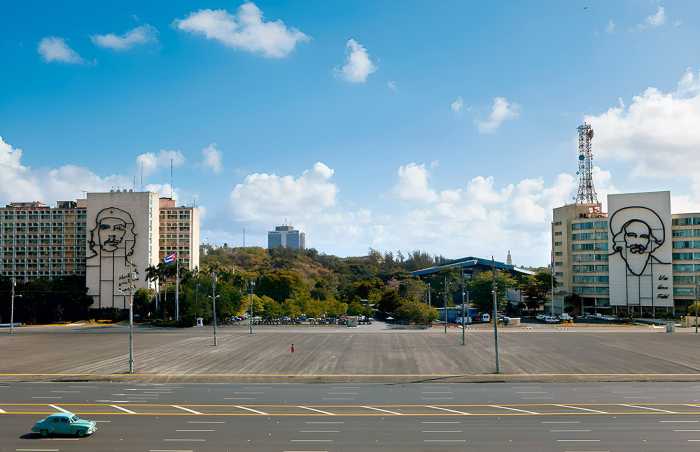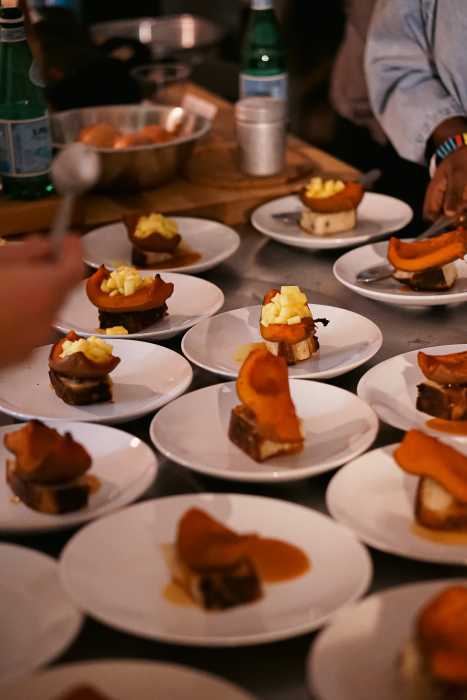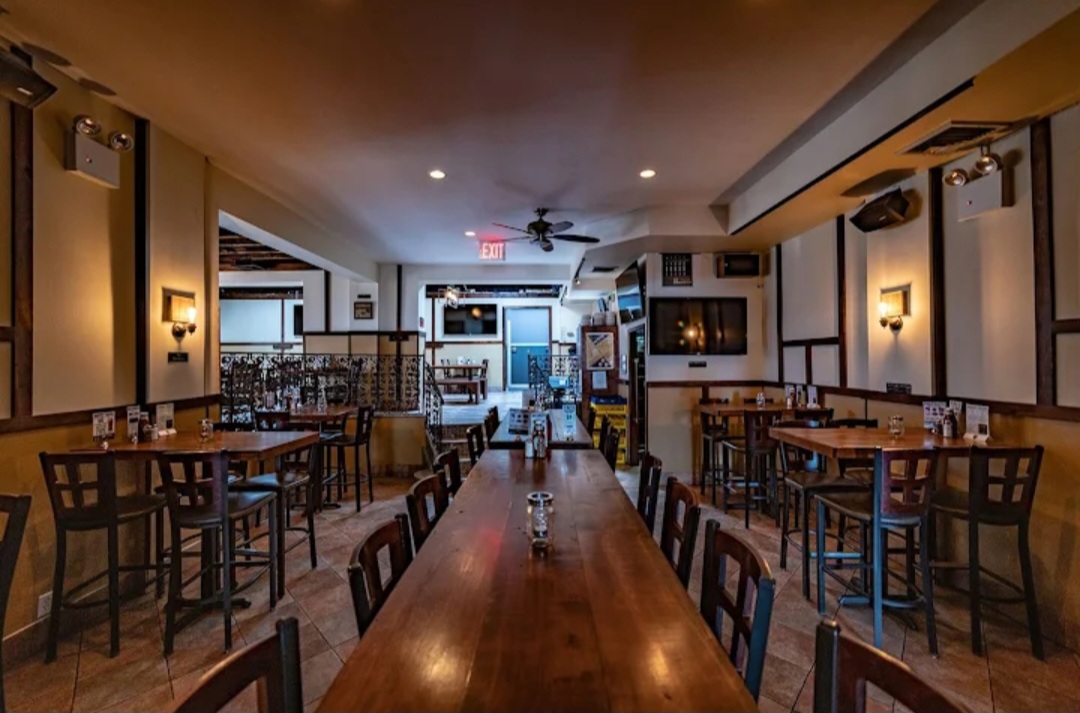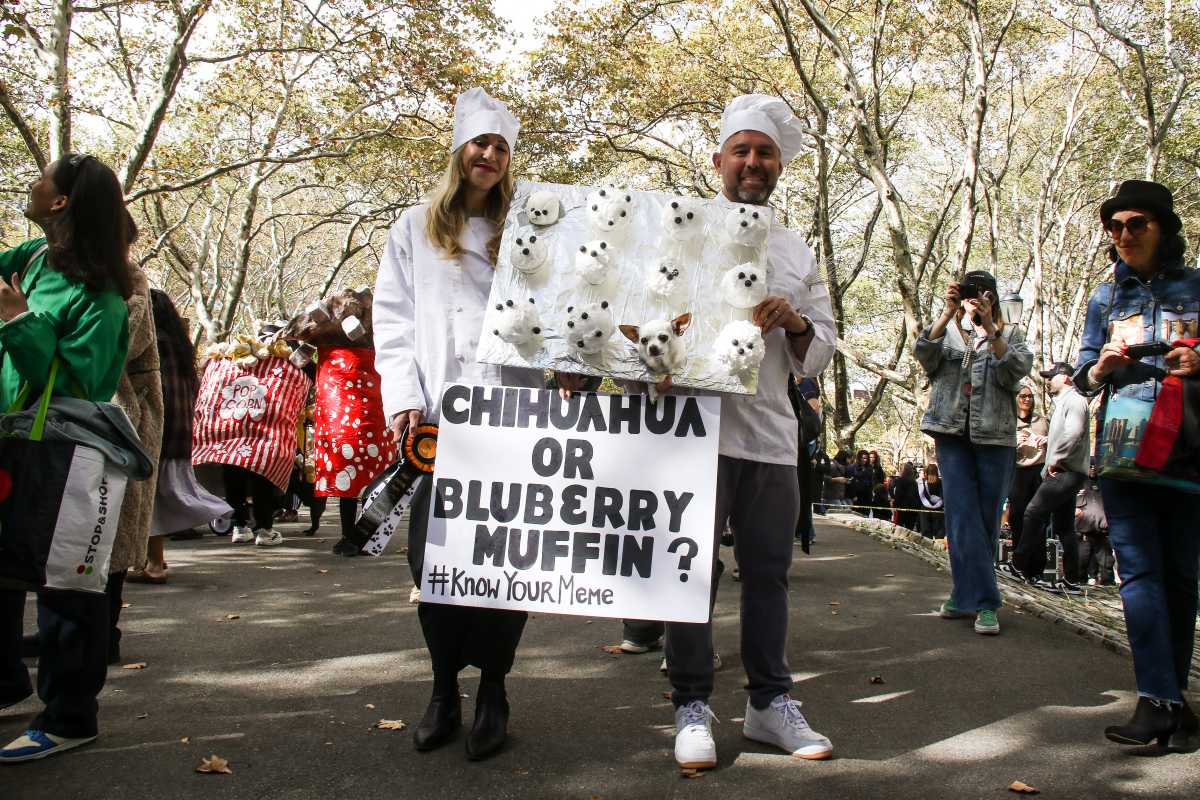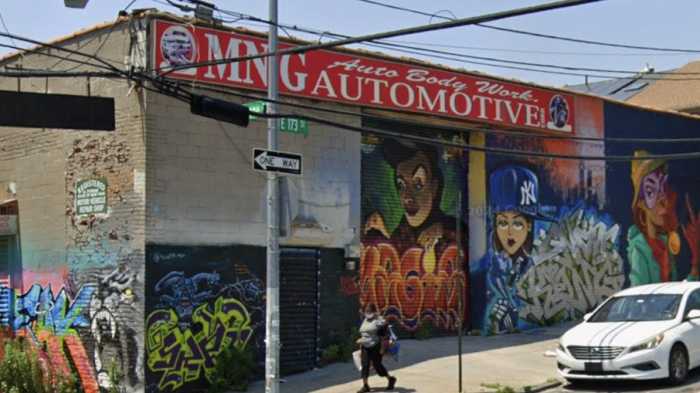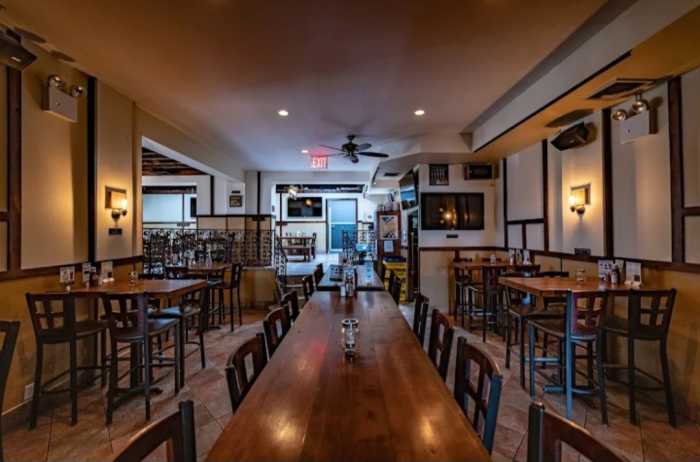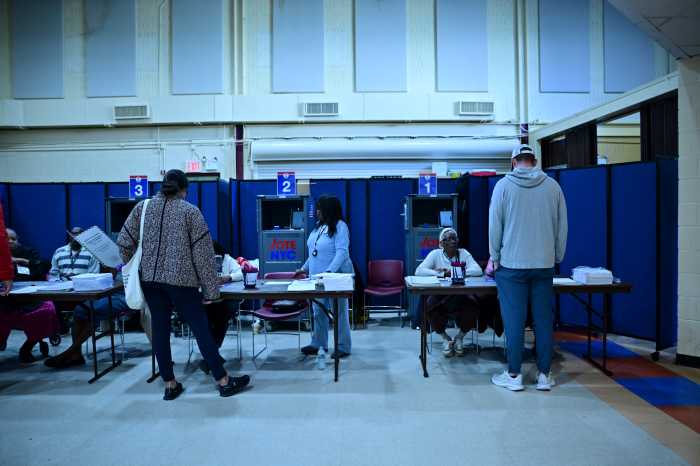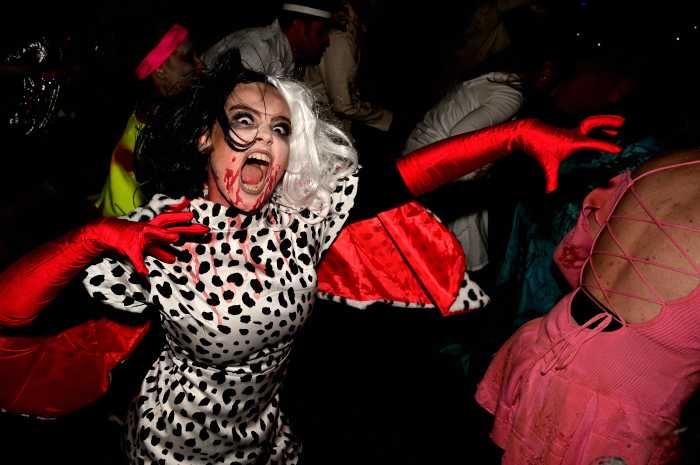By Monica Uszerowicz
Lit aglow by Clayton Patterson’s light sculpture and Nico Dios’s neon installation is Agathe Snow’s “Yellow Brick Road.” The density and scale of the sculpture vary depending on its venue — much like the myths of any culture adapt accordingly to its history. But here, at the Clayton Gallery & Outlaw Art Museum, the work’s shape is incontestably distinct. The road has exploded (or imploded); the bricks, pushed up through the broken street by metal cables, create an image of exposed, vulnerable infrastructure.
The original Yellow Brick Road of “The Wizard of Oz” has been interpreted as a metaphor for gold, once the standard of American currency. More fitting, however, is the road’s symbol for a story, a dream — opportunity, adventure and fortune. Agathe Snow’s “Yellow Brick Road” appears to have been destroyed, but preserves its structure. Perhaps it is a reinterpretation of a dream — the myth of the artist existing in New York City bohemia — as the idea of the dream itself crumbles.
Snow was born in 1976 in Corsica, but it is in New York where she evolved as an artist who has incorporated multifarious motifs into her work. She is muse for and of the city, embodying all of its layers in her sculptures and projects. Her works contain objects taken from and below the street; “Stamina,” a days-long dance marathon that was part of the Whitney 2008 Biennial, invited all of the public — many of the participants were Downtown characters — to engage in the natural collectivity of dancing in a distinctly high-brow, Uptown setting. She is a mother, too, to the artists she feeds through her catering-cum-performance-art pieces and to the crew of visionaries she helped to nurture in her mother’s Lower East Side restaurant.
Before the citywide economic instability following 9/11 forced the restaurant to shut down, La Poème was located at Prince and Elizabeth Sts., a nexus of the Lower East Side. Familial tradition bred in both Agathe and her sister, Anne Apparu, the simultaneous abilities to cook and to foster a community. Like the now-mythological coffee shops and jazz clubs of Downtown’s Beat generation, casual camaraderie spurred the development of a creative niche. Agathe would meet future collaborators, the artists with whom she would grow and move from the Lower East Side to the rarefied world of Saatchi, Deitch and the Whitney.
It was in this fertile environment where Agathe blossomed into the New York artist she could then afford to become; she found she could survive independently in the city and still maintain a creative presence. The food she and her sister cooked in their family restaurant would become the driving force behind other endeavors. Her initial ventures in combining the food of her cultural background with the art of the city culminated in The Chop Shop and Feed the Troops, in which catering became performance.
In collaborative efforts with Anne — now an accomplished chef — and artist Marianne Vitale, Feed the Troops was a second opportunity to sustain the hungry artists of the city, despite the economic landscape’s growing desolation. The Chop Shop delivered healthy and affordable meals during the December holidays; its headquarters became a nest in which artists, coming from their own studios, could eat and relive the sense of familial comfort that was so essential to the existence of La Poème. Artists like Dan Colen, Nate Lowman, Ryan McGinley, Nico Dios, Dash Snow — her former husband — Simon Curtis and Downtown impresario Aaron Bondaroff became integral to both projects.
These were the same men to whom she served as mother figure nearly a decade before.
Then, the option of being an artist in New York was still one to be had. Such projects were two of Agathe’s manifestations of the myth of the New York City artist: the American dream of achievement, and the reappropriation of the familiar — food — into something more imaginative — performance. Ideas like these became the basis for her sculptures, which offer suggestions — inherent in their very designs — of rebirth amid dissolution. “Yellow Brick Road” and others in a similar vein, such as “Hello Kitty” and “Successful Hints,” are clear representations of the city from which their parts were salvaged. The subterranean levels of the city are brought to the surface to be examined in ways previously unseen.
If an artist can afford neither to eat nor to practice her craft, perhaps there are spaces, though temporary, to resolve this dilemma; similarly, if the broken parts of New York City are used to put together a coherent shape, maybe the city can be reborn. After the World Trade Center collapsed, Agathe and her peers found new ways to understand and interpret New York, whose rising cost of living was slowly erasing the presence of the artist.
Agathe found the first brick that would be incorporated into “Yellow Brick Road” on Wall St., close to Ground Zero. The sculpture’s design would indicate the destruction that occurred when the towers fell as well as the fading of the myth of the artist who can flourish in New York. When the ideology that one can move to New York and find a space in which to follow one’s dreams became less probable, the “road” burst.
In Snow’s depiction of the event, there remains a shiny, elusive quality; we can see the bricks standing on cables, prying their way out of their original form, yet still maintaining it. The myth, it seems, refuses to die. “Yellow Brick Road” was once part of an exhibit at Peres Projects in Berlin — “I Don’t Know But I’ve Been Told, Eskimo Pussy Is Mighty Cold” — that offered Snow’s visual commentary on the bursting of a steam pipe in Manhattan in 2007.
Writes Snow, “It told of deep trauma, of the ultimate vulnerability of the human condition.” With these projects, she questions less the myth of the American dream of artistic possibility and more the strength of American institutions and fears. However, a new significance of these pieces has unexpectedly emerged as it becomes more difficult to uphold a creative existence in a traditionally creative city.
The focus, now, is the re-creation of the myth, the rebuilding of the road. The artist will devolve in a city that is unable to afford her, and she it. Rapid gentrification, then, may well signal the end of New York as a bohemia. It becomes both ironic and fitting that internationally recognized artists like Agathe Snow are currently struggling financially to remain in the city that helped to cultivate their collective vision.
The “Yellow Brick Road” is damaged, yet its disconnected bricks stand proudly on their metal wiring, attempting and failing to liberate themselves.







